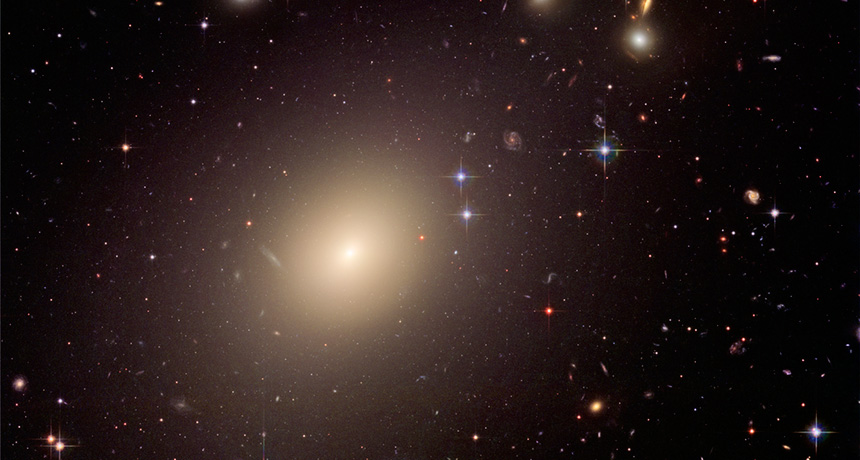
GOOD NEIGHBORHOOD The most likely galaxy to host habitable planets might be a giant elliptical such as ESO 325-G004 (pictured, center), which is about 450 million light-years away in the constellation Centaurus.
Hubble Heritage Team/STScI/AURA, NASA, ESA